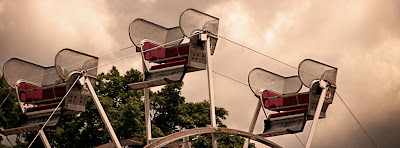Last weekend Scott Kelby, the head honcho at NAPP (National Association of Photoshop Professionals), had his 3rd annual Worldwide PhotoWalk. In Connecticut there were four walks, one in Danbury, one town away from the gallery. I had to go, just for the social aspect of the walk. There was a mix of young, old, professional, amateur, DSLR shooters and Point and Shoot photography enthusiasts in attendance and the weather wound up on our side. The day was forecast as close to 100 degrees, with high humidity. It turned out to be slightly breezy and the walk basically went from shaded area to shaded area, so it was an easily bearable morning. Today’s image comes from near the end of the circuit and is one of the more interesting shots I got during the walk. One of the interesting aspects of the clock was that the bottom box, just under the words “Union Savings Bank” was askew, tilting a little to the right. A couple of small dings in the brass just above the same words showed the clock had been the target of vandals at some point in the recent past. I suspect the angle of the bottom component is due to the same fate. Today’s image is a single shot treated with Adobe Photoshop CS5’s HDR Toning found in Images/Adjustments/ HDR toning. Several masks were used to isolate parts of the image. To find out more about where the masks were used, hit the “read more”.
Read more!
Heading to Belfast!
7 months ago

















